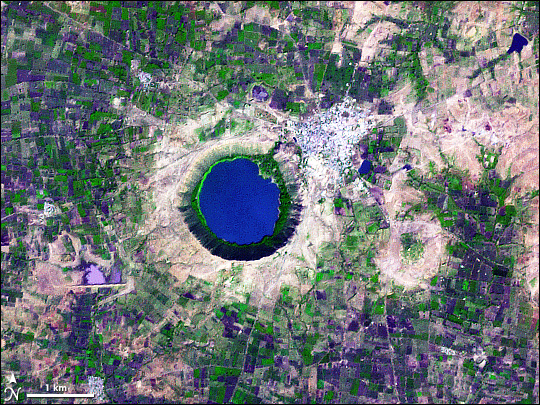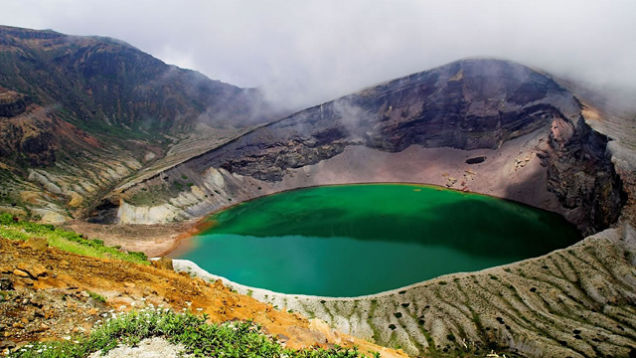
India’s Lonar Crater began causing confusion soon after it was identified in 1823 by a British officer named C.J.E. Alexander. Lonar Crater sits inside the Deccan Plateau—a massive plain of volcanic basalt rock leftover from eruptions some 65 million years ago. Its location in this basalt field suggested to some geologists that it was a volcanic crater. Today, however, Lonar Crater is understood to result from a meteorite impact that occurred between 35,000 and 50,000 years ago.

The Advanced Spaceborne Thermal Emission and Reflection Radiometer (ASTER) flying on NASA’s Terra satellite acquired this image of Lonar Crater on November 29, 2004. In this simulated-true-color image, pink-beige indicates bare ground, blue and off-white indicate human-made structures, dark blue indicates water, green indicates vegetation, and dull purple indicates fallow fields. A vegetation-lined lake fills the crater, one of the few natural features of this scene. Signs of human habitation surround the lake, especially the cluster of blue and off-white points to its immediate northeast. Outside of this settlement, the vicinity is a patchwork of agricultural fields.
Lonar Crater is approximately 150 meters (500 feet) deep, with an average diameter of almost 1,830 meters (6,000 feet). The crater rim rises roughly 20 meters (65 feet) above the surrounding land surface. Scientists established Lonar’s status as an impact crater based on several lines of evidence, perhaps the most compelling being the presence of maskelynite. Maskelynite is a kind of naturally occurring glass that is only formed by extremely high-velocity impacts. A Science article published in 1973 pointed out this material’s presence, and suggested that the crater’s situation in volcanic basalt made it a good analogue for impact craters on the surface of the Moon.









